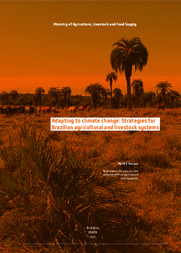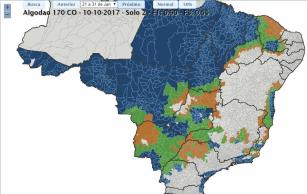Embrapa Tabuleiros Costeiros
 Publicações
Publicações
Agricultural climate risk zoning (ZARC).
Autoria: MONTEIRO, J. E. B. de A.; COSTA, F. de S.; BEZERRA, M. A.; COMUNELLO, E.; ZOLIN, C. A.; PEREIRA, J. R.; MELEM JUNIOR, N. J.; ANTONIO, I. C.; SANTIAGO, A. V.; SILVA, S. C. da; SILVA, F. A. M. da; STEINMETZ, S.; KLEPKER, D.; COELHO FILHO, M. A.; CABRAL, O. M. R.; ANDRADE JUNIOR, A. S. de; GUIMARAES, D. P.; SORIANO, B. M. A.; PEZZOPANE, J. R. M.; EVANGELISTA, B. A.; ALVES, A. B.; MOURA, M. S. B. de; FARIAS, J. R. B.; BARROS, A. H. C.; TEIXEIRA, W. G.; SILVA, A. A. G. da; CUNHA, G. R. da; CONCEIÇÃO, M. A. F.; HIGA, R.; PELLEGRINO, G. Q.
Resumo: Agricultural Climate Risk Zoning (ZARC) was implemented in 1996 with the objective of delineating municipalities and planting times based on agroclimatic risk. At its base is, a network of researchers and technicians from Embrapa and several other state institutions and an elaborate construction of agrometeorological data analysis systems and mathematical simulations, which quantify the production risk in the normal climatic conditions of each region, in order to allow an adequate assessment of the variability of each location, season and its consequences for agricultural crops;
Ano de publicação: 2021
Tipo de publicação: Parte de livro (capítulos de livros, trabalhos e resumos publicados em anais ou em coletâneas)
Unidade: Embrapa Agricultura Digital
Palavras-chave: Agricultura, Agriculture, Cambio climático, Climate change, Mudança Climática, ZARC, Zoneamento Climático, Zonificación, Zoning

